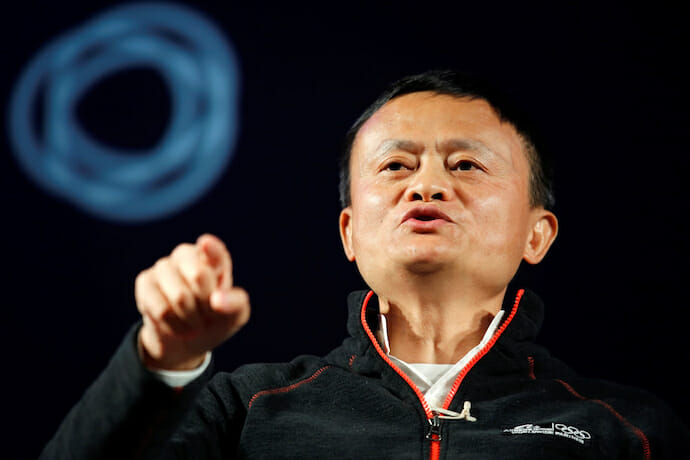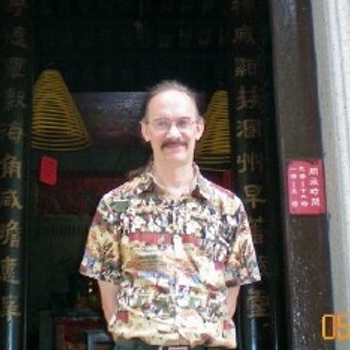
Tech
How the West Ignores the Rising Tide of Chinese innovation
In the post-war years of the ’50s and ’60s, the United States was the undisputed leader in terms of manufacturing, production, and innovation, and we saw the lead in innovation expand with the dotcom boom and Silicon Valley’s domination in the global tech sector. But as much as the entrenched powers of the West talk about “American exceptionalism” and believe that their leading position will never end, in fact, today marks a new era in which neither the United States, nor any other country, can lay claim to that “number one” status.
That’s not to say that the United States’ innovative power has diminished – rather, it’s just that other countries, most notably China, have risen to the challenge. To remain competitive in the global market, US government policy as well as the strategies of private Western corporations must adapt to the realization that they are no longer the 800-pound gorillas of global innovation.
Specifically, Chinese innovation and China’s own brand of state-guided entrepreneurship is coming of age and now looms as a serious competitor to the West. Once thought of as a haven for low-end manufacturing and a center for cheap knock-offs, “China is making a strategic pivot towards innovation, and it will be game-changing,” according to Waterstone Management Group’s latest white paper, “The Real China Threat: Innovation.”
Tom Manning, lecturer at University of Chicago Law School and former CEO of Cerberus Asia, CEO of Indachin, Capgemini Asia, and Ernst & Young Consulting Asia, sees three distinct factors contributing to China’s shift to a major innovative superpower.
“First is a coming of age of tech entrepreneurs in China. Increasingly, the talent which has always been present has finally acquired experience. Fifteen years of tech investing, venture capital, and backing of young startups has now bred a culture of innovation. It’s creating a lot of excitement around what can be, and China’s own talent base is gaining much more confidence than ever before,” Manning said.
The second factor is government intent. “The Chinese government has put quite a bit of money and organizational thinking into how to seed and structure development and R&D, to the point of selecting certain industries for backing, and their brand of state capitalism helps in that regard.” China’s combination of state capitalism, along with the newly emerging entrepreneurial capitalism, “will be the most powerful combination we’ve witnessed worldwide for a while. That may come as a surprise to the rest of the world, but when you put those two together, you get some real power,” said Manning.
The third component of China’s rising success in innovation is the transformation of some state-owned enterprises. “The SOEs are no longer the drag on economic growth they once were,” said Manning. These SOEs are focusing on newer business and product models. While many are still antiquated, “there is evidence of a tide forming there, and potentially changing things. And you get some great success stories like Huawei, ZTE, and others like Haier, which has become the largest refrigeration company in the world.”

Certainly, the question of intellectual property has to be part of any discussion of Chinese innovation, and this too, is changing. In any business environment – whether state-guided or free market – there has to be a framework in which an investment is made, and can be monetized over a predictable period of time. We do have that in most of the world, although admittedly it is not perfected yet in China. However, China’s days of unfettered copyright infringement and knockoffs are coming to a close, simply because of a new demand from within.
China has enacted an array of promising intellectual property laws over the past decade, and while there are still shortcomings in terms of enforcement and penalties, the true harbinger of change is that “The Chinese companies are inventing now, and they want protection. They respect the idea that they need it as much as multinationals do, and they don’t want to see other Chinese companies rip them off either. So we’re going to see a groundswell over time, from the high tech community and progressive SOEs for better enforcement of intellectual property rules.”
China moves to a higher stage of innovation
The Chinese government is spending money – and lots of it – in seeding incubation labs and innovation, and the strategy is paying off. Chinese companies are producing new products and services, and to that point, a Thomson Reuters study showed that in 2014, there were in excess of 600,000 patent applications published out of China, and that has increased considerably since 2012. Patent applications coming out of China are 50 percent higher than in 2012, and have already exceeded the annual applications coming out of the United States.
The focus on STEM education in China is certainly contributing to their growth and emerging status as technology innovator. A large proportion of Chinese college students – over 30 percent — graduate with STEM degrees, significantly more than US students in terms of percentage. An emphasis on English language education starts in the fourth grade, indicating government policy that places an emphasis on connecting with the world.
And while the Chinese government is putting money and emphasis on education at all levels, the country’s brightest are often being educated in the West. According to research from the Pew Research Center, graduates from US colleges are more likely than ever to be from overseas, and foreign students – a large percentage from China – are earning more than half of all advanced degrees in the STEM fields. According to the study, the foreign student population grew 72 percent from 1999 to 2013, with most of that increase attributed to Chinese students.
What the West must do to stay competitive
The current electoral cycle in the United States seems to be promoting – from both ends of the political spectrum – a dangerous isolationist attitude that is unworkable in an environment in which innovation and invention is growing among America’s Asian competitors. To continue to ignore China’s emerging status as leaders in innovation, and ignore the possibility of cross-cultural cooperation in business and technology, will only stifle growth in the West.
The US government also needs to take a second look at its immigration policy, which tends to create an environment in which China sends its best and brightest young minds to be educated in STEM fields in the US, then once educated, the US sends them back to contribute to China’s economy rather than its own. “The talent that comes across is rich. It’s phenomenal,” said Manning. “We ought to do more than simply allow the talent to remain, or certainly more than force it to go back. We ought to be much more welcoming. The brain power is essential to our own entrepreneurship and continued growth.” Manning notes that students coming from China have largely been pre-screened and pre-qualified. “These are among the top candidates for higher education anywhere in the world. For us to have them in our midst and lose them, or allow them to return simply because we provided them with no incentives or possibly great disincentives, is a short-sighted economic policy. It’s the kind of thing that if we were more coordinated, we just wouldn’t allow to happen.”
Claiming “American exceptionalism” and superiority in innovation, simply because of geographic status, is an approach that cannot continue. Innovation knows no boundaries. Western innovators, industrialists and legislators must acknowledge that fact if they want to continue to grow and prosper economically.

